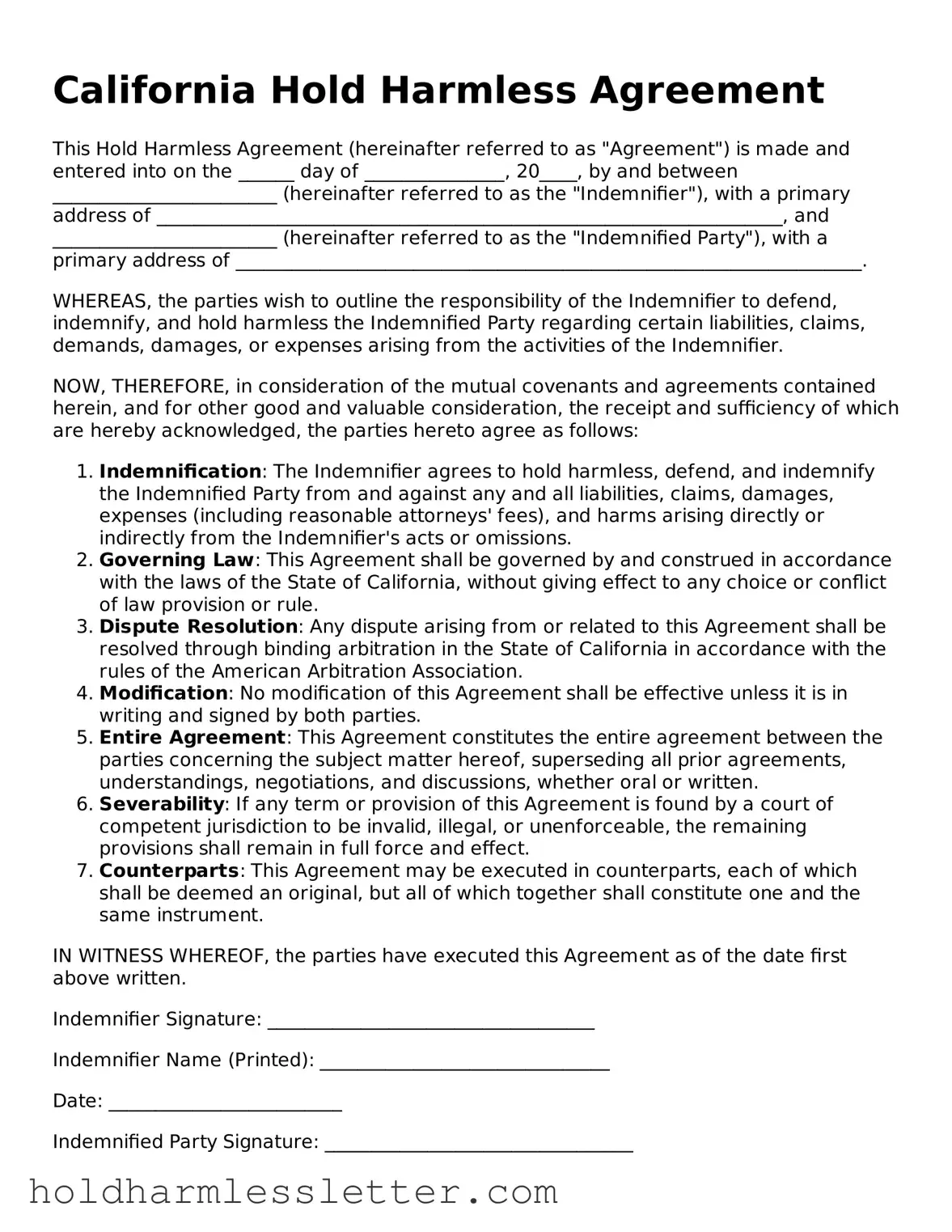California Hold Harmless Agreement
This Hold Harmless Agreement (hereinafter referred to as "Agreement") is made and entered into on the ______ day of _______________, 20____, by and between ________________________ (hereinafter referred to as the "Indemnifier"), with a primary address of ___________________________________________________________________, and ________________________ (hereinafter referred to as the "Indemnified Party"), with a primary address of ___________________________________________________________________.
WHEREAS, the parties wish to outline the responsibility of the Indemnifier to defend, indemnify, and hold harmless the Indemnified Party regarding certain liabilities, claims, demands, damages, or expenses arising from the activities of the Indemnifier.
NOW, THEREFORE, in consideration of the mutual covenants and agreements contained herein, and for other good and valuable consideration, the receipt and sufficiency of which are hereby acknowledged, the parties hereto agree as follows:
- Indemnification: The Indemnifier agrees to hold harmless, defend, and indemnify the Indemnified Party from and against any and all liabilities, claims, damages, expenses (including reasonable attorneys' fees), and harms arising directly or indirectly from the Indemnifier's acts or omissions.
- Governing Law: This Agreement shall be governed by and construed in accordance with the laws of the State of California, without giving effect to any choice or conflict of law provision or rule.
- Dispute Resolution: Any dispute arising from or related to this Agreement shall be resolved through binding arbitration in the State of California in accordance with the rules of the American Arbitration Association.
- Modification: No modification of this Agreement shall be effective unless it is in writing and signed by both parties.
- Entire Agreement: This Agreement constitutes the entire agreement between the parties concerning the subject matter hereof, superseding all prior agreements, understandings, negotiations, and discussions, whether oral or written.
- Severability: If any term or provision of this Agreement is found by a court of competent jurisdiction to be invalid, illegal, or unenforceable, the remaining provisions shall remain in full force and effect.
- Counterparts: This Agreement may be executed in counterparts, each of which shall be deemed an original, but all of which together shall constitute one and the same instrument.
IN WITNESS WHEREOF, the parties have executed this Agreement as of the date first above written.
Indemnifier Signature: ___________________________________
Indemnifier Name (Printed): _______________________________
Date: _________________________
Indemnified Party Signature: _________________________________
Indemnified Party Name (Printed): _____________________________
Date: _________________________
